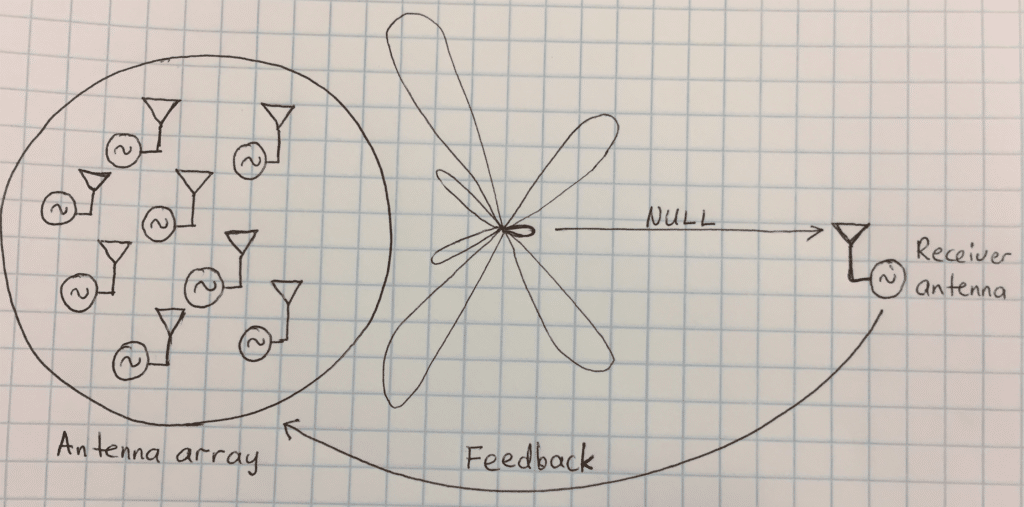A dual of wireless distributed beamforming is nullforming, a spatial filtering technique used to limit the energy of a beam from a given direction. In distributed nullforming, the problem is as follows: a set of cooperating transmitter nodes transmitting a common signal, spatially align their individual transmit signals in such a manner as to cancel each other out at a designated receiver node. The receiver node cooperates with the transmit array by sending a feedback signal concerning the received signal (RS) strength for the previous epoch. The sample at the receiver node follows the following:
where is the channel gain for the
sensor at the
epoch,
is the channel phase estimation error at the
epoch,
is the received phase from sensor
at the
epoch and
is a zero mean additive noise. The setup is as illustrated in Figure 1.
Figure 1: Distributed transmit nullforming.
Without loss of generality, assume that the channel is stationary, then and
. To form a null at the receiver node is equivalent to minimizing the cost function:
The algorithmic solution to minimizing the above cost function is a distributed implementation where each transmit sensor implements the algorithm:
where and
denote the imaginary and real parts of the received signal at the receiver node respectively and
denotes estimated value. The receiver sends a feedback signal containing the RS for the
epoch. The scalability of the algorithm is evident since each node independently implements the algorithm by estimating its channel characteristics and using the common feedback signal from the receiver node.
